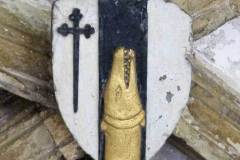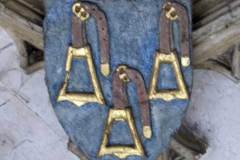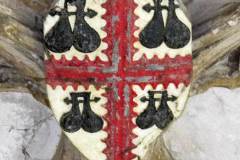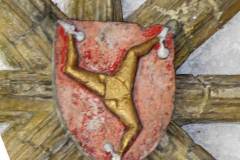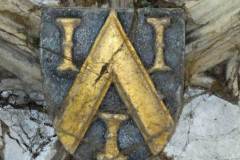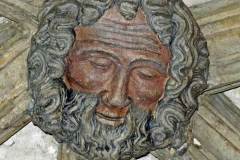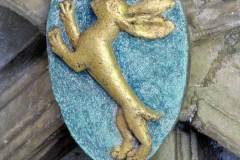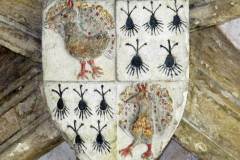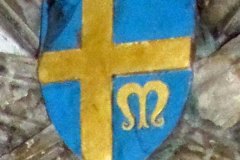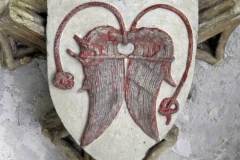The cloister ceilings, completed in the early 1400s, contain over 800 medieval heraldic devices, representing benefactors who helped finance the building of the new cloisters. Together they form by far the largest assembly of 15th century shields and badges in England. The following notes draw attention to points of interest in just ten examples of these (we will add more later).
What to see:
- there are many examples of heraldic animals and birds, some more obvious than others – the Gascoigne family shield (Image 1) incorporates the head of a conger eel (not a crocodile!)
- many symbols relate to horsemanship and warfare – the Scudamore shield (Image 2) includes three stirrups
- another device associated with travel to war is the water carrier – four appear in the Bourchier shield (Image 3)
- the Isle of Man emblem can be seen in several shields (in Image 4 with spurs)
- the passage of time has rendered some devices incomprehensible – the example at Image 5 is currently variously interpreted as a chevron three bobbins or three candlesticks or three cups (etc)
- amongst the 800 shields can be seen many heads – one that of Henry Yevele who designed and oversaw the construction of the nave (Image 6)
- the shield with a hare (Image 7) is an example of a concocted device of which several existed in medieval heraldic books – in this case supposedly of Thrace
- the black insect-like doodles between the peacocks (Image 8) are very common and represent the ermine fur – in this case of the Pawne family
- there are a few recent additions to the collections – one (Image 9) commemorating the visit of Pope John Paul II in 1982
- a few shields show the lure, used by falconers to entice trained falcons to return – that in Image 10 belongs to the Fitzpayne family
Sources; see standard cathedral sources; also Messenger (1947)
DL

